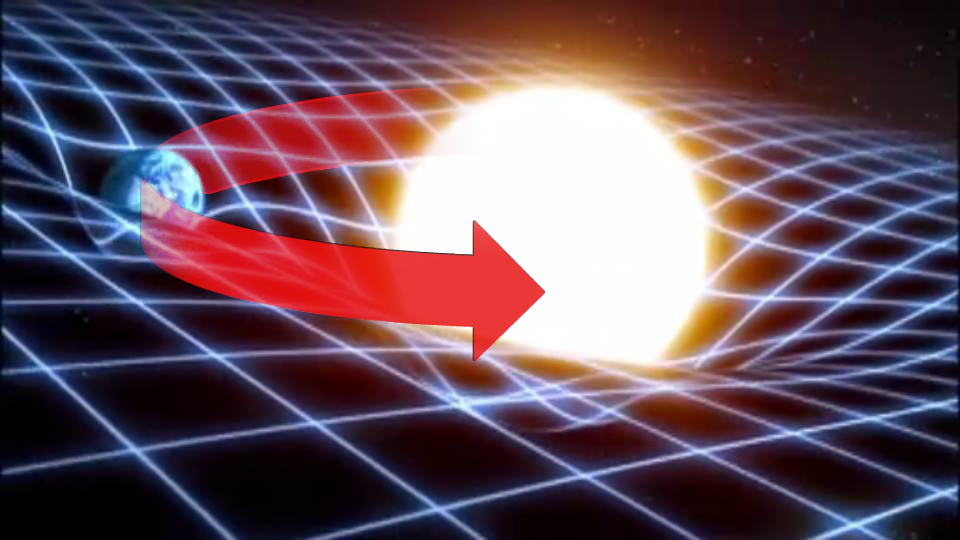Stretching the Fabric of Space
Ask any kid about the coolest thing they've learned in science. If they're still in elementary school, they'll tell you about dinosaurs, particularly the T Rex. By the time they're in middle school, however, a different kind of carnivore will be high on their list. But this one doesn't have legs and nine inch teeth. This monster preys on galaxies.

- German astrophysicist Karl Schwarzschild calculated the first rigorous solution to the field equations in Albert Einstein's theory of general relativity while serving on the Russian front during World War 1.
- Photo credit: Wikipedia Commons
When Einstein developed relativity theory, it took him about ten years to work out the math using a daunting form of mathematics called
tensor calculus. He was only able to approximate the solutions to his own equations and the math still perplexes even the best scientific brains. However, the challenge did nothing to deter one of Einstein's contemporary astronomers- a theoretical physicist named
Karl Schwarzschild. Schwarzschild was a practical individual by nature. He pioneered new methods of studying spectra, for example. But he excelled in his abilities to deal with theoretical concepts and when Einstein's articles on general relativity were published in 1915, Schwarzschild was one of the first to recognize their importance.
Schwarzschild was also a German patriot, so he set aside his astronomical studies when World War 1 erupted and enlisted in the army. By the time he had read Einstein's papers, he had already seen action in Belgium, France and on the Russian front. Nonetheless, he was attracted to the essentialness of general relativity and began to seek exact answers for its equations. Two months after contracting a life threatening disease and being sent home to recuperate, Schwarzschild was finally able to concentrate on completing his calculations. Shortly before his death in 1916, Schwarzschild completed his work and it was published later the same year. Titled
On the Field of Gravity of a Point Mass in the Theory of Einstein, it became one of the pillars of modern relativistic studies and in it Schwarzschild presented his solutions to Einstein's unfinished equations.
Significantly, it provided support for a, then, seemingly implausible situation about the effects of severely compressed matter on gravity and energy.

- Just as a bowling ball placed on a trampoline stretches the fabric and causes it to dimple or sag, so planets and stars warp space-time - a phenomenon known as the 'geodetic effect'. Thus the planets orbiting the Sun are not being pulled by the Sun; they are following the curved space-time deformation caused by the Sun.
- Photo credit: WGBH Boston
When Einstein wrote his general theory of relativity, he found a new way to describe gravity. It was not a force, as Sir Isaac Newton had proposed, but a consequence of a distortion in space and time, conceived together in his theory as 'space-time'. According to Einstein, matter and energy exist on a background of space and time. There are three spatial dimensions (backwards-forwards, left-right and up-down) and one time dimension (which flows at one second per second). Objects distort the fabric of space-time based on their mass- more massive objects have a greater effect.
Just as a bowling ball placed on a trampoline stretches the fabric and causes it to dimple or sag, so planets and stars warp space-time - a phenomenon known as the 'geodetic effect'. A marble rolling across the trampoline will be inexorably drawn towards the bowling ball. Thus the planets orbiting the Sun are not being pulled by the Sun; they are following the curved space-time deformation caused by the Sun. The reason the planets never fall into the Sun is due to the speed at which they are traveling. The astrophysicist,
John Archibald Wheeler, who coined the name "Black Hole", said it succinctly: "matter tells Space-Time how to curve, and Space-Time tells matter how to move."
Schwarzschild realized the escape velocity from the surface of an object depends on both its mass and radius. For example, the escape velocity of the Earth is about 11.2 kilometers per second- this is the speed a rocket must attain before it can depart the Earth on a journey to the Moon or more distant planets. The Moon's escape velocity, however, is only 2.4 kilometers per second because the Moon is one fourth the size of our planet and possesses only slightly more than 1% of its mass. But, if nature can make the radius of a given mass small enough, the escape velocity will increase until it reaches the speed of light, or 300,000 kilometres (186,000 miles) per second. At that point, neither matter nor radiation can escape from the object's surface. Additionally, atomic or subatomic forces become incapable of holding the object up against its own weight. Therefore, the object collapses into an infinitesimal point- the original object disappears from view and only its gravity remains to mark its presence. As a result, it creates a bottomless pit in the fabric of space-time.
-
 Image credit: John Hawley (Univ of Virginia) & Andrew Hamilton
Image credit: John Hawley (Univ of Virginia) & Andrew Hamilton
Near the event horizon
While black holes, themselves, are invisible, their presence exerts a powerful gravitational force on nearby gas and stars, causing everything to orbit at tremendous speeds. As the matter nears the event horizon, it accelerates until it approaches the speed of light and in the process acquires tremendous energy. Some of this energy is converted into radiation.
For example, the material forms an accretion disk around the black hole. Friction within the disk heats it to extremely high temperatures causing it to become extremely bright. So, even though a black hole is invisible, its accretion disk makes it presence observationally evident. Some of the material within the disk reaches sufficient speed that it escapes being pulled into the event horizon and is thrown around the black hole emerging as powerful jets of intense energy, one at each pole. These jets are invisible in white light, but they can be seen in radio frequencies.
When a black hole is in its active phase, it's known as a quasar.
This incredible, scientificaly accurate animation places the viewer inside the accretion disk of a supermassive black hole. It was created from a supercomputed simulation.
Scientists now refer to an object with zero-volume but all of its mass as a
singularity. Schwarzschild also explained that a singularity was surrounded by a spherical gravitational boundary that forever trapped anything that ventured within. This boundary was called the
event horizon. He presented a formula that enabled the size of an event horizon to be calculated. This is now known as the Schwarzschild radius and it marks the edge of a bottomless pit in space-time. Venture beyond the brink and you will never return.
The
formula for the Schwarzschild radius is very straightforward:
3 times M (where "M" is the mass of the sun and the result is expressed in kilometers). For example, if the Sun were shrunk to a singularity, it's event horizon would occur at three kilometers above its surface. Interestingly, it would not disturb the orbit of our planet and we would not suddenly be sucked into oblivion! Similarly, the Schwarzschild radius of the Earth is a third of an inch: if the Earth were to be similarly compressed, the sphere of its event horizon would be about the size of a marble!
However, scientists did not grasp its significance in the role of stellar evolution for about fifty years and have only recently realized its dramatic impact on the development of the Universe itself!
Despite the radical predictions contained in Schwarzschild's papers, the scientific community regarded it as a curiosity rather than outrageous. The idea of a singularity troubled many scientists, including Einstein, because it flew in the face of their experience- after all, the world is finite and everything can be weighed and measured.
Leading thinkers of that period could not imagine conditions that would create a singularity but now we know they are common throughout the Universe. Where? In the fates of
massive stars and at the center of most, if not all, galaxies!
More
»